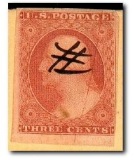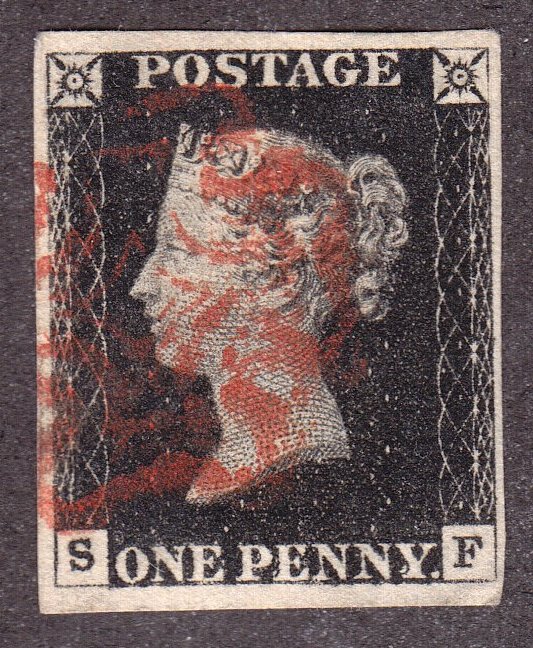
Discussion - Member to Member Sales - Research Center

Discussion - Member to Member Sales - Research Center


Login to Like
this post
Here's an example for my question. Malaysia recently issued a souvenir sheet, initially without their name then later one that had. So what becomes of the first? Would that be regarded as an error?


Login to Like
this post
I would not consider everything that differs from the norm to be an error. As far as I know, a stamp without countryname is no problem, as long as the stamp would not be used for international mail. I do not think the UPU has anything to say about how national postal authorities handle their internal affairs.
Jan-Simon

Login to Like
this post
Jan-Simon brings up an important point in nomenclature. Error, in US stamp collecting at least, refers to a stamp that is significantly different from what was intended to be produced and, normally, substantially different from others in the same run. Error does not refer to problems in design, only in execution. So if those birds pictured above had the wrong latin or vernacular names, and they all had the same wrong ones, it's a design flaw, not an error. Ditto the Bill Pickett stamp: all were wrong, so it's not an error.
David

Login to Like
this post
OK, so an error has to be something that resulted from the stamp's printing process (therefore unintended) as opposed to design flaws that are due to mistakes. But I would imagine that either case would still create an "oops" scenario that may or may not prompt the post office concerned to produce a 'corrected' issue. In the example I gave, Malaysia later came out with the same stamp which had its name (below). So how should one regard these 2 stamps other apart from being curiosities?


Login to Like
this post
it depends, Bob. in the US, think of Bill Pickens, which caused an immense furor when it was found it was the wrong image. If anyone needs a recounting of the story, ask, otherwise, I'll assume we know it.
Equally famous, but far more distant in time, is the Dag Hamerschjall error, in which, the USPS issued more of the error stamps (here a production rather than design flaw) and now there's two versions of the stamp: correct and incorrect. Because the second error stamp was issued as such after the error was discovered, and is indistinguishable from the error, it's just a stamp, and, like the correctly aligned stamp, sells below face as discount postage.
In one case, we have a stamp trading at around $180 or so (more if postally used prior to the recall, because it's far rarer); in the other, it's discount postage still found in face piles.
Ooops is definitely correct.
is that what I meant to say?

Login to Like
this post
11:42:19pm
To my knowledge, all stamp issuing countries have to conform to the UPU guideline where all have to put their country names on their stamps, the only exception being Great Britain where the queen head suffices. But what if a country omits their name, intentionally or not...does that 'invalidate' the stamp? Any consequences for the country that issued it?

Login to Like
this post
03:34:27am
re: Definition of "error"
Here's an example for my question. Malaysia recently issued a souvenir sheet, initially without their name then later one that had. So what becomes of the first? Would that be regarded as an error?


Login to Like
this post

Approvals
re: Definition of "error"
I would not consider everything that differs from the norm to be an error. As far as I know, a stamp without countryname is no problem, as long as the stamp would not be used for international mail. I do not think the UPU has anything to say about how national postal authorities handle their internal affairs.
Jan-Simon

Login to Like
this post
Auctions
re: Definition of "error"
Jan-Simon brings up an important point in nomenclature. Error, in US stamp collecting at least, refers to a stamp that is significantly different from what was intended to be produced and, normally, substantially different from others in the same run. Error does not refer to problems in design, only in execution. So if those birds pictured above had the wrong latin or vernacular names, and they all had the same wrong ones, it's a design flaw, not an error. Ditto the Bill Pickett stamp: all were wrong, so it's not an error.
David

Login to Like
this post
03:19:12am
re: Definition of "error"
OK, so an error has to be something that resulted from the stamp's printing process (therefore unintended) as opposed to design flaws that are due to mistakes. But I would imagine that either case would still create an "oops" scenario that may or may not prompt the post office concerned to produce a 'corrected' issue. In the example I gave, Malaysia later came out with the same stamp which had its name (below). So how should one regard these 2 stamps other apart from being curiosities?


Login to Like
this post
Auctions
re: Definition of "error"
it depends, Bob. in the US, think of Bill Pickens, which caused an immense furor when it was found it was the wrong image. If anyone needs a recounting of the story, ask, otherwise, I'll assume we know it.
Equally famous, but far more distant in time, is the Dag Hamerschjall error, in which, the USPS issued more of the error stamps (here a production rather than design flaw) and now there's two versions of the stamp: correct and incorrect. Because the second error stamp was issued as such after the error was discovered, and is indistinguishable from the error, it's just a stamp, and, like the correctly aligned stamp, sells below face as discount postage.
In one case, we have a stamp trading at around $180 or so (more if postally used prior to the recall, because it's far rarer); in the other, it's discount postage still found in face piles.
Ooops is definitely correct.
is that what I meant to say?

Login to Like
this post

